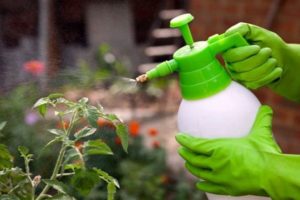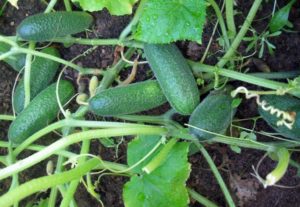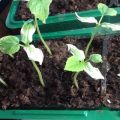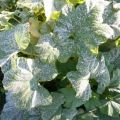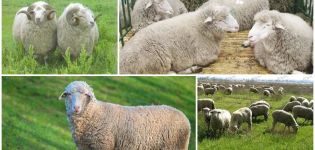What is cucumber ascochitis, symptoms and control measures
Ascochitis of cucumber is an infection of the culture with a fungus. Microorganisms slow down the growth of plants, but do not completely kill them, continuing to parasitize on a weakened bush.
Fighting infection is a troublesome and difficult process. Spores are transmitted to the crop by infecting seeds, and then develop with the plant. How to defeat ascochitis on your site and prevent infection of new shoots? Let's figure out what symptoms characterize ascochitis and how to deal with it correctly.
Pathogen development
The cause of the appearance of ascochitosis is the infection of a colony of cucumbers with parasitic fungi. Greenhouse and greenhouse crops are affected more often. First of all, the fungus is dangerous for weak plants with weak immunity. Rot affects the plant during the fruiting period, less often during the formation of the stem.
The fungus loves a humid and warm climate, therefore it is especially active in greenhouses and greenhouses. Fungal spores demonstrate increased activity in spring, in good light conditions, when, due to the lack of heat, the cucumber culture is weakened and unable to fight them. The following phases of the development of the disease are distinguished:
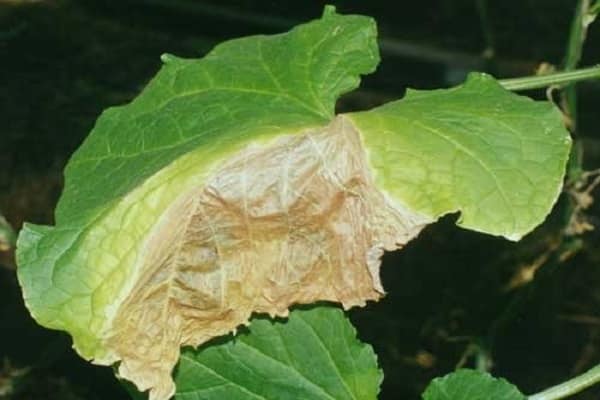
- The parasite infects the seeds of the cucumber crop and then waits for the opportunity to develop as the plant grows. The spores are on the seeds in a state of suspended animation. At the time of planting in the soil, they begin to gradually increase their population along with the plant. The fungus infects the upper tissues of the cucumber, and does not touch the vascular system, therefore the plant retains the ability to grow, although in a weaker form.
- The fungus turns into an active form during the setting of leaves on a cucumber. The defeat begins with the lower layer of leaves, first the pathogen colonizes tissues, and then the vessels. By April-May, the mycelium forms and begins to infect the neighboring leaves of the plant by air with the help of spores. In this case, the pathogen expands the area of its presence up the stem, affecting even the middle leaves.
- The fungus penetrates into the fruits and leaves of the upper level by the end of the growing season. Faded watery spots appear on the fruits, which then darken and give way to rust. Weakened fruits degrade and gradually begin to dry out and die.

The fungus does not develop in the soil. During storage, it does not pass from one fruit to another. It also does not multiply in the roots.
Important! To slow down the expansion of the fungus, it is recommended to carry out seed thermotherapy and disinfection with fungicides, which slows down the development of the disease by 15–25 days.
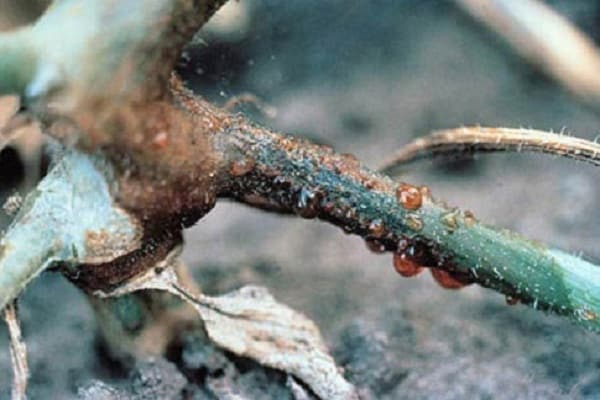
Disease symptoms
If preventive measures failed to stop the expansion of the fungus, the parasite begins to infect the outer tissues of the plant.Infection of a cucumber with black stem rot can be determined by the following characteristic features:

- First, gray watery spots begin to appear on the stem. Then they begin to turn white and cover an ever larger area of the stem. Black rot begins to develop on the vulnerable parts of the stem, where pinching, leaves and fruits were removed.
- When infected during the period of fruit growth, the fungus begins to infect the edges of the leaves. Then the surface of the leaf turns brown, the disease spreads to the fruit.
- Fruits dry out and visually appear wilting, remaining firm to the touch. Such a cucumber stops developing, and subsequently decomposition processes begin in it.
- A form of infection is possible in which the fruits become covered with ulcers or turn white. The body of the fruit is covered with a rusty coating and mucus appears, under the influence of which the cucumber begins to rot.
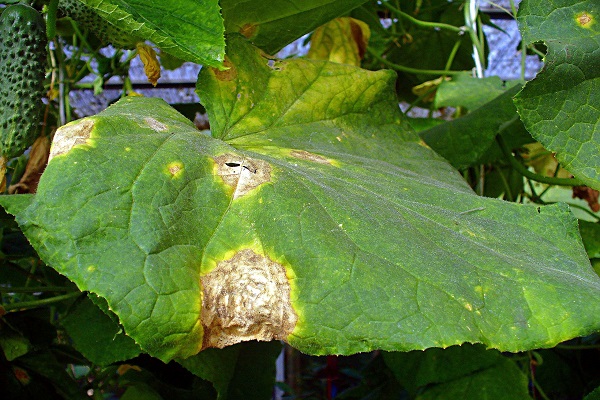
In its development, the fungus passes along with the plant through all stages of its vegetation, gradually rising along the stem from the roots to the upper layer of leaves and fruits. Therefore, if you slow down its progress with the help of a set of preventive measures, then you can successfully grow a cucumber crop and even harvest from it a crop that the fungus will not have time to reach.
Important! The removal of the lower leaves must be done after the appearance of mature pycnidia of the fungus in early summer. This allows you to restrain the development of mycelium.

Prevention and elimination methods
Fighting the fungus is difficult, since it does not react to fungicides during the growing season. With ascochitis of cucumbers, control measures should be as follows:

- water the culture in the evenings with warm water;
- cover the seedlings with a film until a pronounced stem with leaves is formed;
- crop rotation so that spores do not infect the cucumber crop every year;
- buy and plant varieties resistant to ascochitosis;
- add chemicals to the soil to protect the crop from disease;
- remove all affected leaves on the bush.
If the fungus is fixed in the area, it is necessary to process the following preparations:

- Add green manures to the soil shortly before planting seedlings. They increase the immunity of plants and allow them to more effectively resist the fungus. To further enrich the soil, you can also plant sanitary crops such as rye and oats on green manure. Subsequently, such a culture is crushed and plowed into the ground with manure before planting cucumber seedlings.
- Disinfect the inside of the greenhouse by spraying a formalin solution on the walls and ceiling. Steam the soil additionally, although this has only a weakening effect on the parasite.
- Treat the seeds with active fungicides such as Vincit, Tiram and Saprol. They will weaken the fungus until it disappears completely.
- In case of damage to leaves and fruits, spray the plants with Bordeaux liquid or a mixture of urea with copper sulfate. In the case of fungus on the stems, a powder consisting of copper and chalk is applied to them.
When using the above methods, it is possible to significantly slow down the progress of ascochitosis along the stem, and as a result, completely eradicate the disease.

